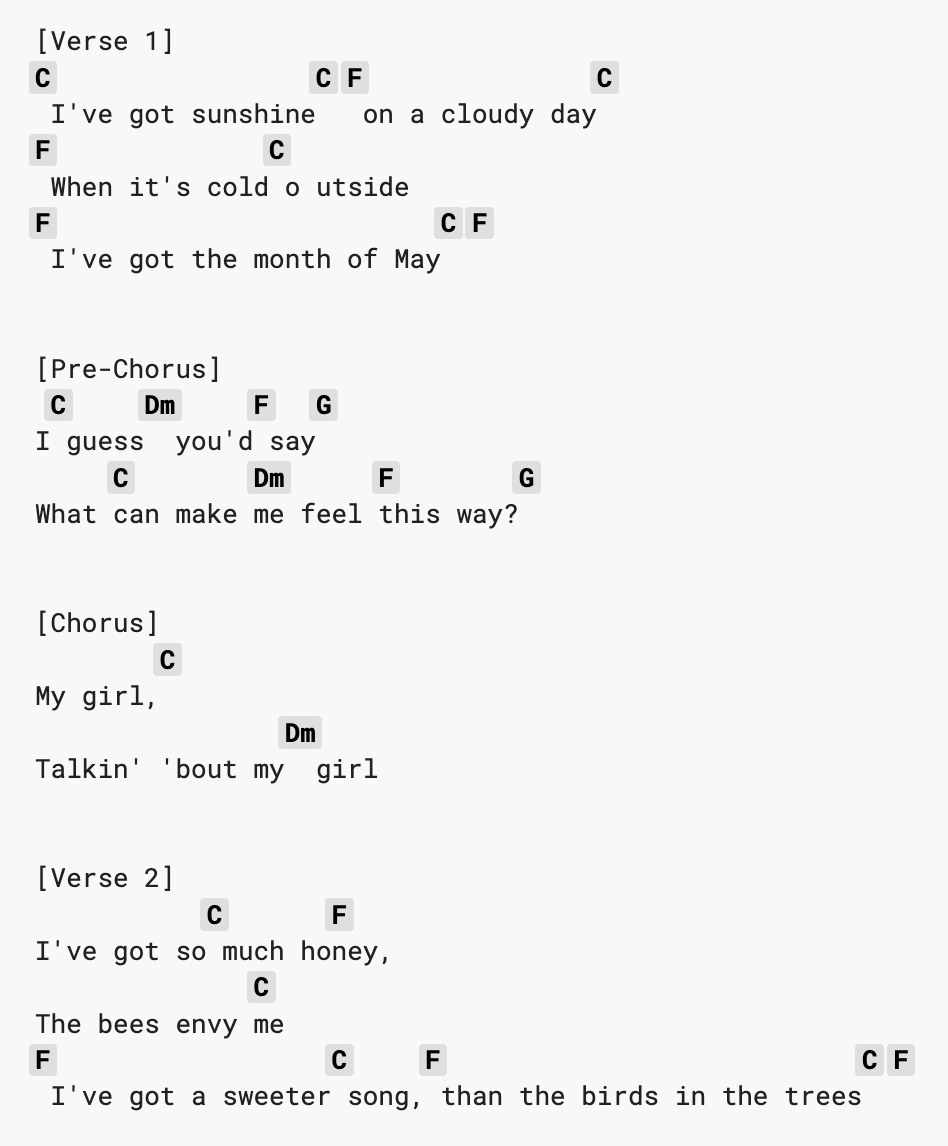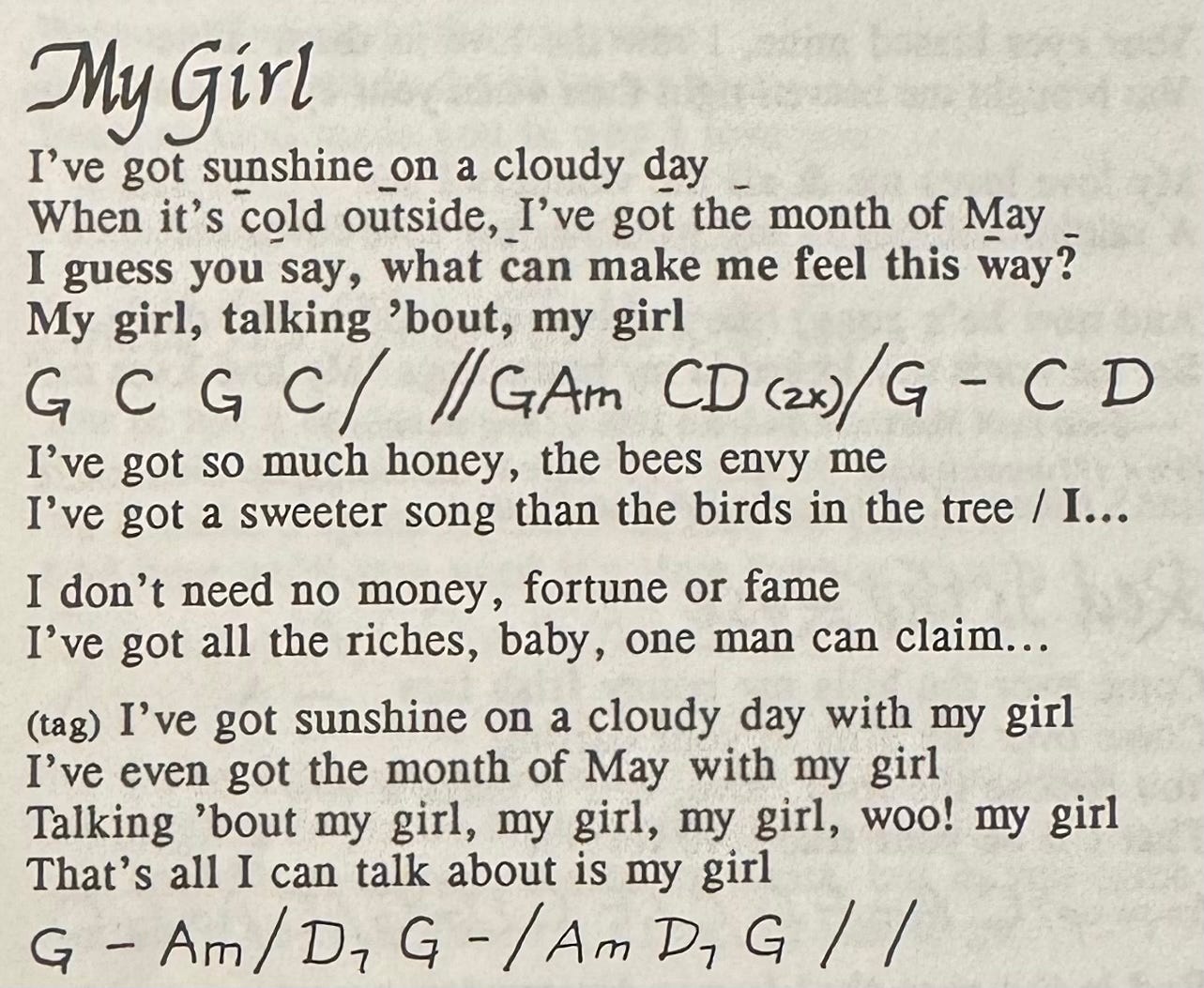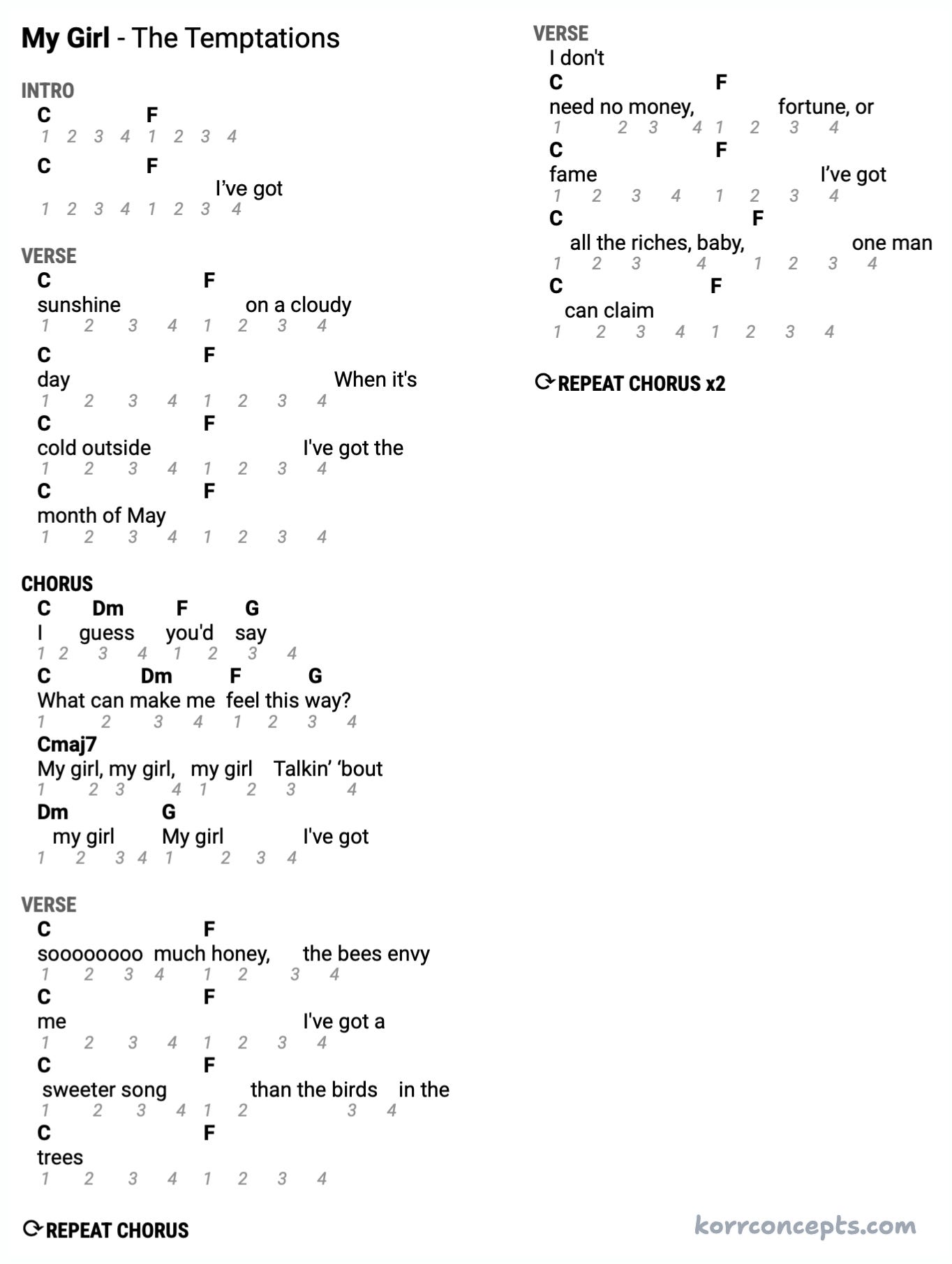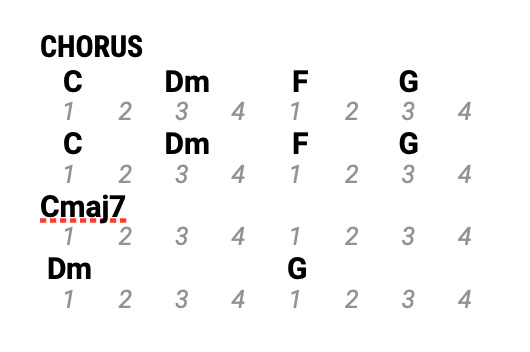Sing-along innovation: Reinventing songsheet formatting
First kazoos, now songsheets: In my quest to modernize and innovigorate sing-alongs, I’ve (nbd) kinda started to reinvent casual-songsheet formatting.
THE KORR CONCEPT: My casual-songsheet reinvention has three main ideas:
Re-orient songsheet formatting around musical timing — beats and measures — rather than lines of prose.
Creatively convey vocal phrasing through spatial and phonetic representations of words, syllables, and sounds.
Use design elements to improve legibility and wayfinding.
For example, here’s the Korr Format songsheet for Creedence Clearwater Revival’s “Have You Ever Seen the Rain”:
WHY IT MATTERS: Most musicians and singers learn songs using what I call casual songsheets: internet chords, campfire printouts, Rise Up Singing — basically anything that’s not sheet music. But the dominant casual-songsheet formats fail musicians and singers in two key ways:
They make it hard for musicians to know when to change chords.
They make it hard for singers to know when and how to sing a given line or phrase.
In this post I’ll unveil my core innovation: beat-based songsheets. I’ll cover vocal phrasing and wayfinding innovation in follow-up posts.
Grab your guitar/uke, warm up your voice, fire up Spotify — and let’s nerd out on songsheets. 👩🎤🤘🎸🎼🎺🧠
Current Songsheet Formats
Before diving into my new approach, I’ll briefly recap the dominant casual songsheet formats.
Internet Chords
This is the most common songsheet format. You see the Internet Chords format1 on sites like Ultimate-Guitar.com and others stretching back to the pre-browser days.2
Here’s the the Internet Chords format for a different song, The Temptations’ “My Girl”:
The crucial thing to notice is that Internet Chords songsheets:
Revolve around the lyrics rendered as discrete lines of coherent prose.
Ignore the song’s musical timing.
That is, the songsheet creator tries to make each typed line of lyrics a complete sentence or phrase if you read the line as prose, regardless of how that line corresponds to the music’s timing. As a result, chord placement is haphazard, confusing, and often incorrectly/arbitrarily aligned with the lyrics.
Rise Up Singing
The Rise Up Singing format3 is used in the seminal sing-along songbook (first published in 1988) and its 2015 sequel, Rise Again4.
Here’s Rise Up Singing’s approach to “My Girl”:
While the chord placement is different than in Internet Chords, Rise Up Singing shares that format’s approach of rendering lyrics as discrete lines of coherent prose. (Rise Up does try to convey some musical timing, but it’s incomplete and unintuitive.)
Introducing Beat-Based Songsheet Formatting
My core innovation is to reframe casual songsheets around musical timing rather than around lyrics-as-lines-of-prose.
Here’s the Korr Format songsheet for “My Girl”:
Rendering and reframing around measures and beats conveys key information that’s missing from the other formats:
When singing doesn’t start “on the one”
When chord changes and vocal timing are unusual or extra-precise
When a song’s consistent timing briefly changes
When singing doesn’t start “on the one”
In many songs, chord changes occur on a measure’s first beat (aka “on the downbeat” aka “on the one”). But for any given lyrical line:
Singing does not start on the one — instead waiting a bit to create rhythmic, anticipatory, or propulsive effects.
Often, this causes the lyrical line to wrap to the next musical line. In this case, the words sung on a measure’s first beat are conceptually in the middle or end of — rather than the start of — the lyric/prose line. (This is the musical version of a poetry technique called “enjambment.”)
My Girl
We see/hear both techniques in “My Girl.” There’s a recurring pattern where David Ruffin waits to start singing lyrical lines until later in the musical line (“I’ve got …”, “When it’s …”). This wraps the lyrical line to the next musical line, so mid-sentence words — not the sentences’ first word — are sung on beat 1 (“… sunshine”, “… cold outside”).
This is all visible in the Korr Format:
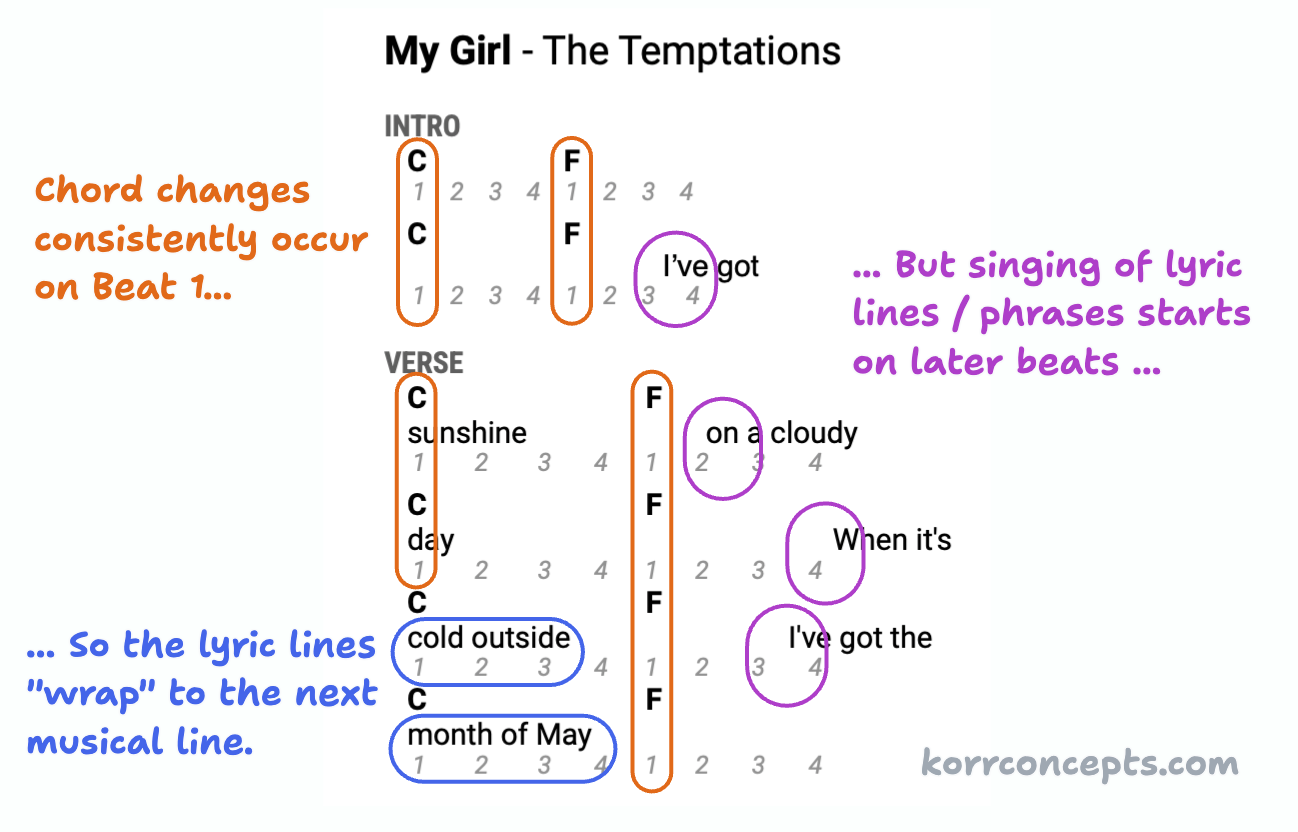
In contrast, current songsheet formats always align the first word of a lyric line with the first beat of the music line, which leaves musicians and singers lost when the vocals and chord changes aren’t aligned:
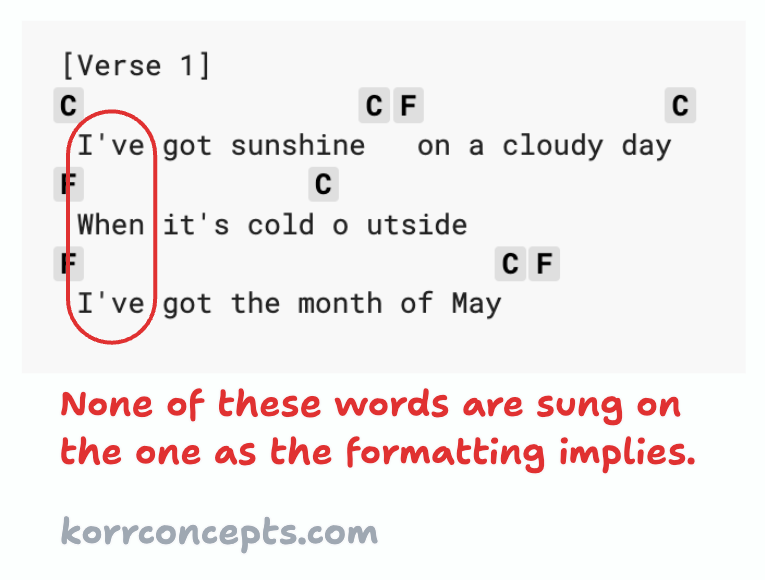
With or Without You
U2’s “With or Without You” is another good example. Here’s the Korr Format version:
Zooming in on the verses, we see that Bono establishes a pattern of waiting several beats before starting to sing a lyrical line (“See the stone…”, “Sleight of hand…”, “Through the storm…”). These pauses help convey the song’s yearning feeling.
Again, the Korr Format makes that clear and easy to follow:
And again, the Internet Chords version is totally unhelpful:
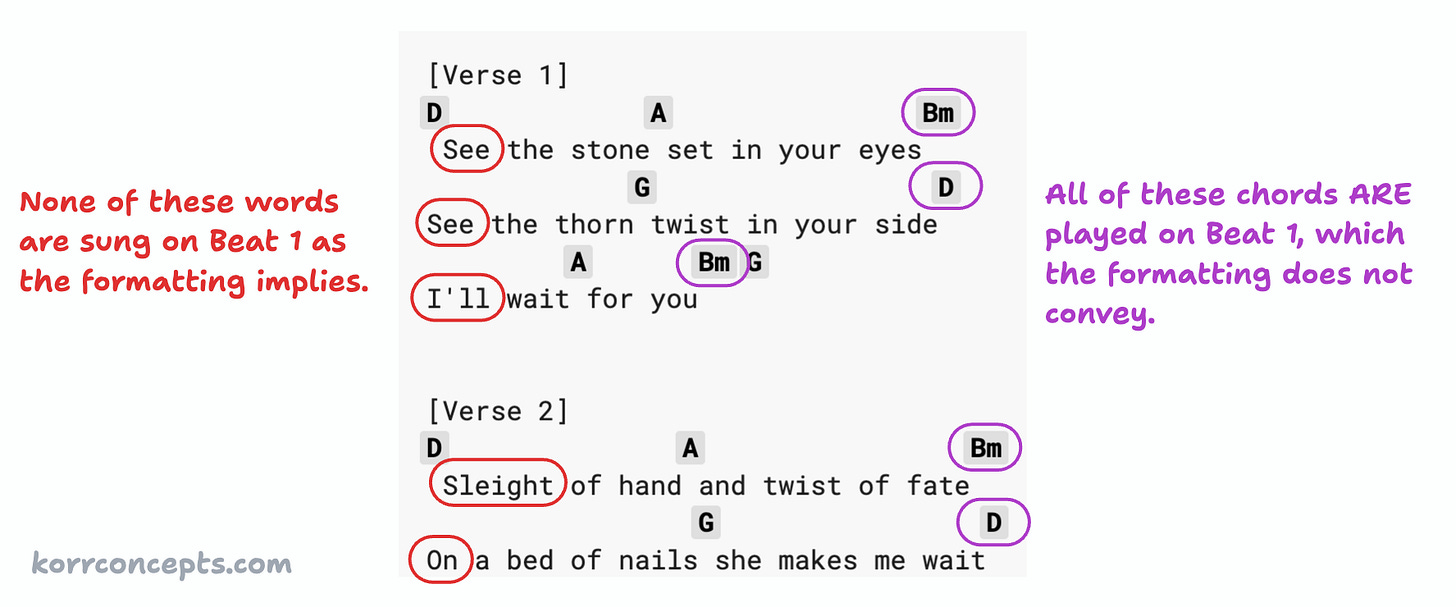
The formatting incorrectly implies that each lyrical line’s first word is sung on Beat 1, and doesn’t convey that many chords are played on Beat 1.
When chord changes and vocal timing are unusual or extra-precise
Reframing songsheets around beats is also helpful for communicating chord changes and vocals that occur precisely on (or precisely between) specific beats.
Rolling in the Deep
For example, the Adele hit has unusual chord-change timing: In the verses, most chord changes fall on the 1-and and 3-and beats, which always feels later than you’d expect. I’ve heard this song dozens of times, and those changes still aren’t intuitive for me.
Beat-based formatting makes it much easier to follow this unusual timing:
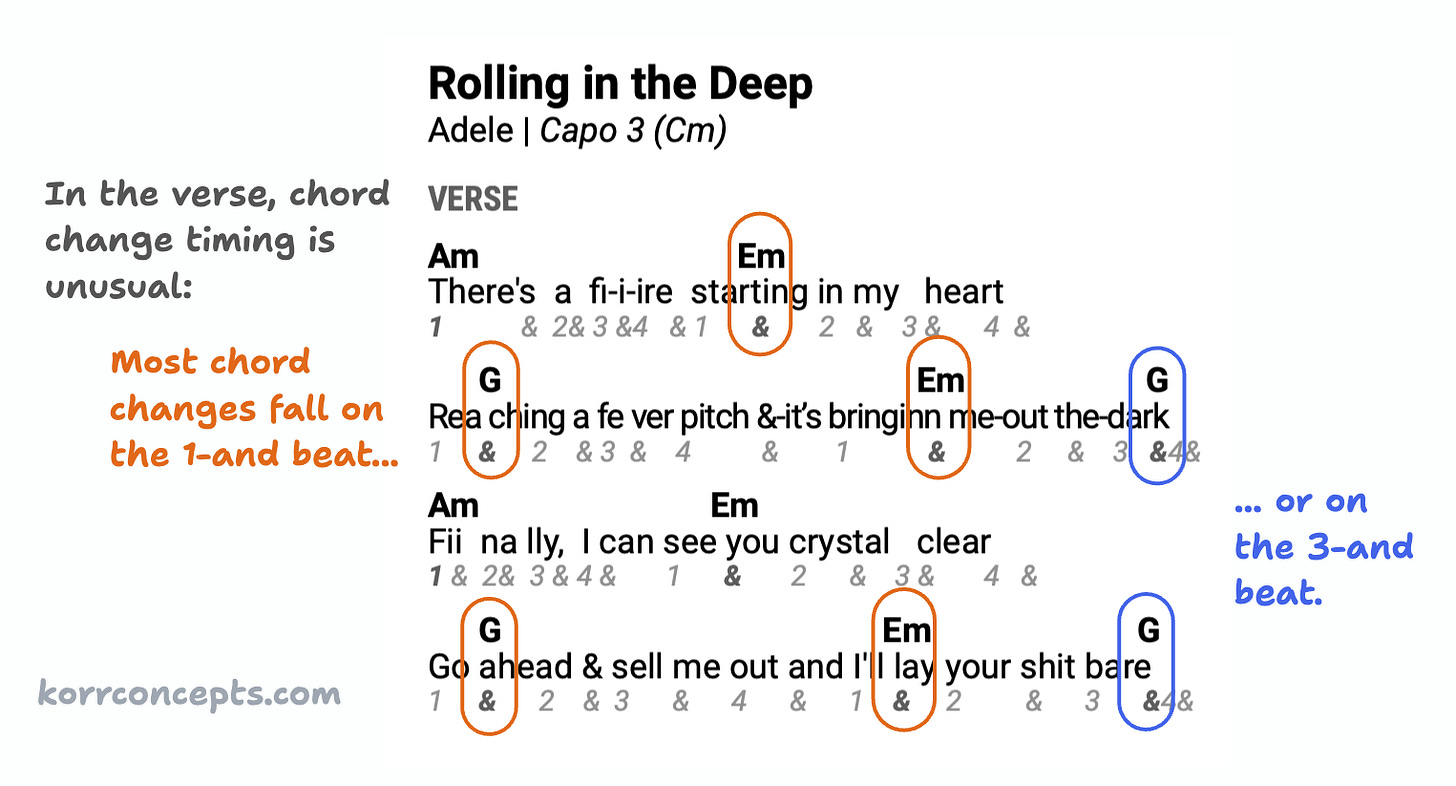
When a song’s consistent timing briefly changes
Beat-based formatting also helps with brief sections that depart from a song’s previously established timing.
The Boxer
For example, Simon & Garfunkel’s “The Boxer” has a one-off section in Verse 4 that’s tricky to follow. In the second half of the verse, the melody, chords, and timing all change from the previously established patterns:
Beat-based formatting makes it easier to learn and follow these one-off changes.
An Iterative Design Challenge
The Korr Format is very much a work in progress. I’m constantly iterating — you can see different variations across the above screenshots — and don’t feel like I have a polished v1 yet. I also need a lot more feedback. (Which is one reason I’m writing this bloggie!)
Here are the biggest design challenges I’ve encountered.
Space Constraints
While the Korr Format could be used for any context, my focus is on printed songbooks for my sing-alongs. I use a two-column layout try to squeeze as much content as possible on each page (to keep the book length manageable), and try to fit each song within a max of two facing pages (so musicians don’t have to turn the page mid-song).
Both of these choices create space constraints. For example, I often combine two measures on one line so the song doesn’t spill onto a third page — but then the two-column layout forces me to squeeze words or beats closer together than I’d prefer.
Too Much Information
Between the chords, lyrics, and beats, there’s a lot of information to track. The other Korr Format elements that I didn’t cover in this post — vocal phrasing and wayfinding — add even more details to parse.
I hope that’s all intuitive enough to sub-consciously pick up in the moment, but I’m guessing I’ll need to pare back some ideas.
Inconsistent Beat Spacing
This is the biggest — perhaps unsolvable — challenge: as long as beats and words are shown together, the beats will never be consistent from line to line.
For musicians, it would be easiest to learn chord-change timing if beat spacing was consistent from line to line. For example, the “My Girl” chorus would be easiest to learn if the beat-based songsheet looked like this:
But adding words to the songsheet forces inconsistent beat spacing from line to line:
This happens because different words have different typographic lengths, even if they have identical musical-time lengths. For example, here “I” and “what” have the same musical length (one beat) but drastically different typographic lengths. So the beats’ positions have to shift from line to line depending on the lyrics’ typographic length.
What do you think?
I’d love feedback and ideas to keep improving the Korr Format. If you want to try it out, email dcsingalong (at) gmail (dot) com and I’ll send you a songsheet!
The internet didn’t invent this format, but it’s how most people access the format today. Pre-internet, I would have called this format “Campfire Chords.”
Fun Fact 1: My first experience with the (pre-browser!) internet was asking my older brother to print guitar chords (and Street Fighter II moves) in his college dorm computer lab.
It’s a stretch to call Rise Up Singing a “dominant” songsheet format — overall it’s a blip compared to Internet Chords. But it is dominant within certain sing-along / group-singing subcultures.
Fun Fact 2: My brother and I helped select songs and create chord charts for Rise Again.



